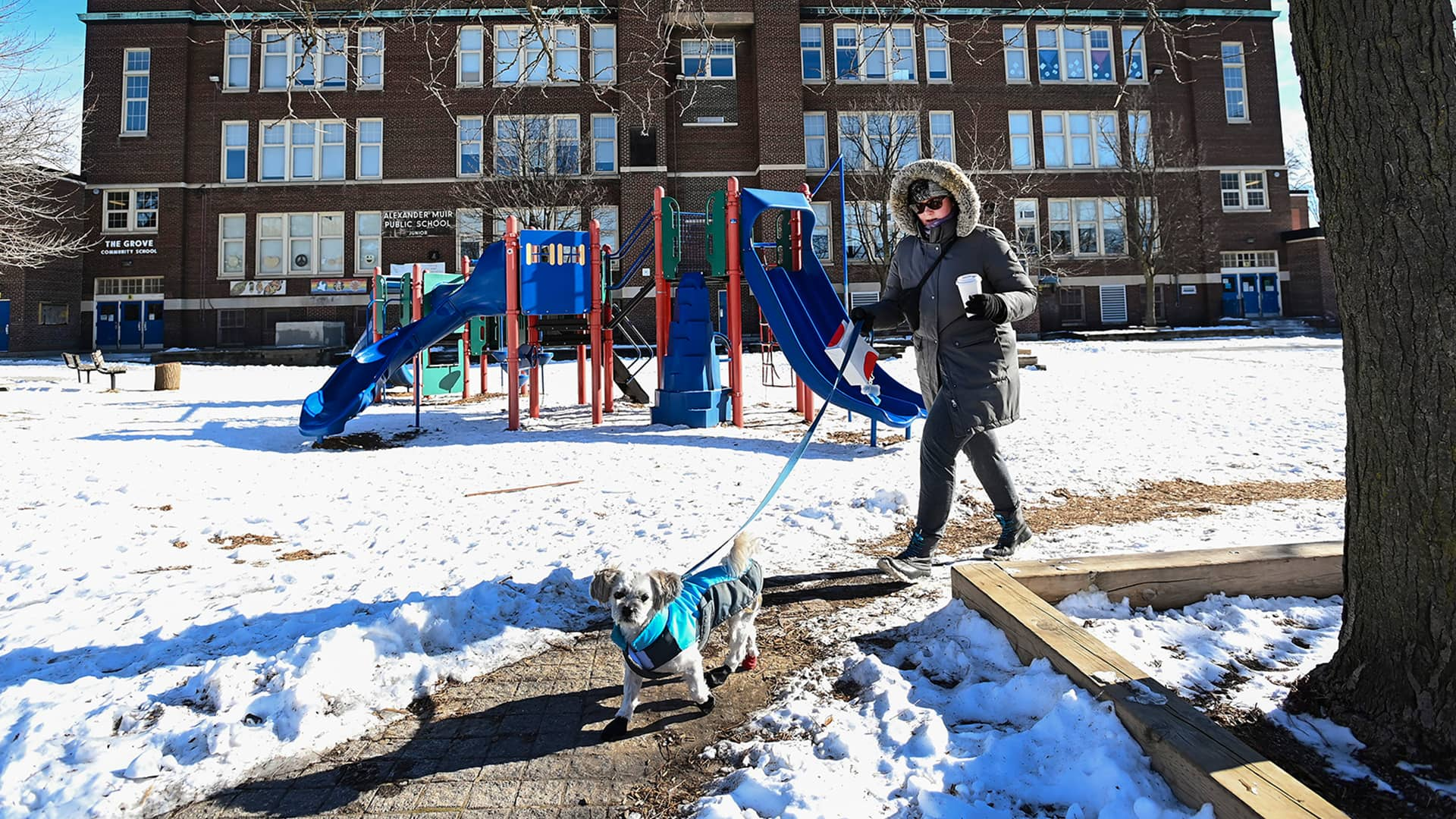Despite Ontario’s overall downward trend in new COVID-19 cases, sharp regional differences in the rates of transmission make it unlikely that the Ford government will lift public health restrictions uniformly across the province in the coming week.

Despite Ontario’s overall downward trend in new COVID-19 cases, there remain sharp regional differences in transmission rates, making it unlikely that the Ford government will lift public health restrictions uniformly across the province in the coming week.
Ontario’s province-wide stay-at-home order is due to expire on Wednesday, four weeks after it came into effect. The government will then begin a phased reopening of the economy in regions where COVID-19 infection rates are lowest, the Canadian Press reports, citing government sources.
Premier Doug Ford, who will announce the timetable as early as Monday, has already said publicly that any easing of restrictions would happen regionally.
“Especially in the northern and rural areas, we want to get the economy opening up, but safely,” he said during a visit to the province’s COVID-19 testing facility for international arrivals at Toronto’s Pearson Airport.
“I know a couple of hot zones might be a week later.”
The wide range in COVID-19 infection rates around the province provides evidence why Ontario would likely take a regional approach to loosening the lockdown. Such a move would mean a return to colour-coded alert levels for public health units, which haven’t been applicable since a province-wide lockdown took effect on Boxing Day.
Other provinces, including Quebec, Alberta and Nova Scotia are preparing to ease COVID-19 restrictions in the coming week, while British Columbia is keeping its measures in place for now.
“I think we have to be really careful about easing restrictions for the entire province,” said Dr. Jeff Kwong, a senior scientist at ICES, an independent research institute that studies Ontario health issues, and a professor at the University of Toronto’s Dalla Lana School of Public Health.
If measures are loosened in some parts of the province, Kwong said the ban on non-essential travel needs to remain in place so that people from COVID-19 hot zones don’t spread infections elsewhere.
WATCH | Ontario expected to take regional approach to reopening:

Ontario’s state of emergency is set to expire this week, but with COVID-19 variants being detected across the province and ICUs still under pressure, a quick end to stay-at-home orders may not be in the cards and a regional approach is expected. 1:46
Reopening retail shops with capacity restrictions could be safe, said Kwong in an interview with CBC News. But he warned against situations where people would be gathered without masks, such as allowing restaurants or bars to resume serving customers indoors.
Ontario’s red level of restrictions included a ban on indoor drinking and dining at bars and restaurants. It also recommended against non-essential travel, a provision that was widely ignored in mid-December, according to mobility data produced by the province’s COVID-19 Science Advisory Table.
The government set 40 new cases per week per 100,000 population as a threshold for imposing red level measures in local public health units. According to the most recent weekly epidemiological report published by Public Health Ontario (covering the last week of January), some of the densely populated urban areas were seeing case rates far above that.
By contrast, some of the more sparsely populated health units in northern, eastern and southwestern Ontario are showing lower rates of transmission, putting them in the ranges set for the green or yellow levels of restrictions
There are exceptions to that general urban versus rural trend: Ottawa’s weekly rate of new cases per 100,000 population was 38.2 while Chatham-Kent’s was 107.2.
Data analyzed by ICES shows 11 public health units with test positivity rates higher than the province’s 2.5 per cent threshold for red zone restrictions.
Phasing out restrictions regionally would follow the pattern that Ontario set with phasing in the resumption of in-person classes in the province’s school boards .
Schools in northern Ontario resumed face-to-face instruction on Jan. 11, with just one week of online-only classes after the Christmas break. Public health units in eastern and some parts of southwestern Ontario followed suit gradually over the ensuing weeks.

Schools in 13 public health units are to return to class on Monday, while the Toronto, Peel region and York region school boards don’t come back to class until Feb. 16.
Epidemiologist Raywat Deonandan, an associate professor at the University of Ottawa, said he favours a regional approach to loosening public health measures, in part because the public appears more willing to accept restrictions that are based on the local impact of COVID-19.
“Data does suggest that that we should be focusing on these hot button areas like Toronto and Peel,” said Deonandan in an interview with CBC News.
“If we have a finite number of resources, you can move them to the hot button areas of the province.”
Both Deonandan and Kwong cautioned that more contagious variants of COVID-19 pose the threat of pushing case numbers back up again if too many restrictions are eased.
“These new variants are significantly more transmissible,” said Deonandan. “That might change everything. If we can’t control the spread of those new variants, the entire province is at risk.”
The variants add a whole new dimension to the pandemic, said Kwong. “There’s huge potential for it to take off again, so we’re all very worried about this,” he said.
“That’s why I think a lot of people are urging that we not be too quick in relaxing any restrictions at this point.”
